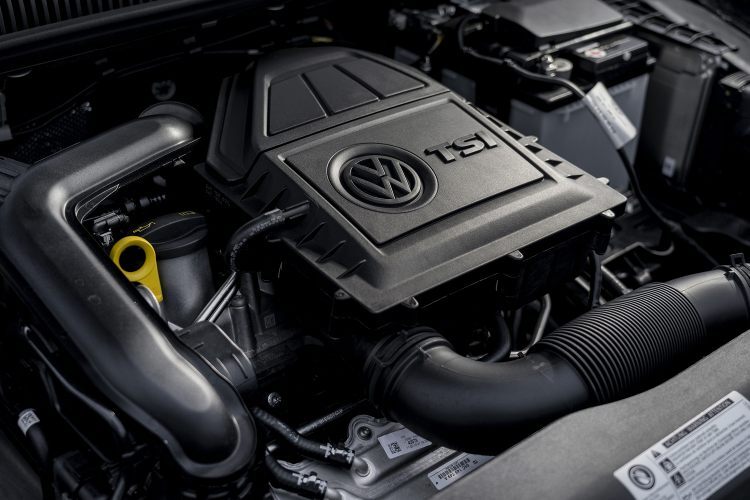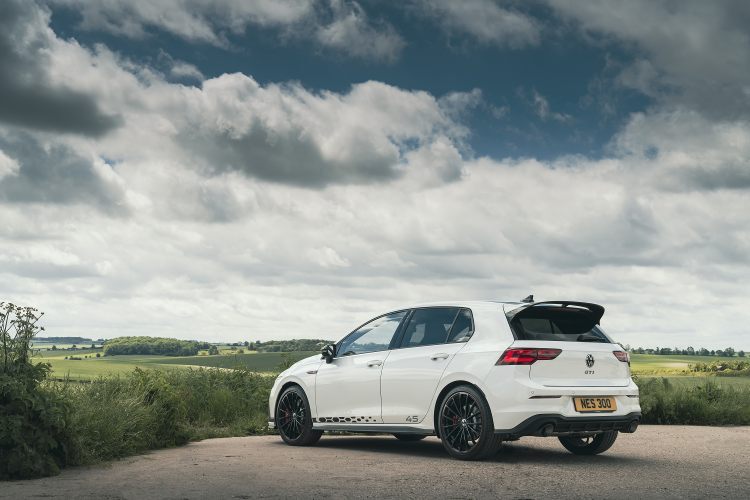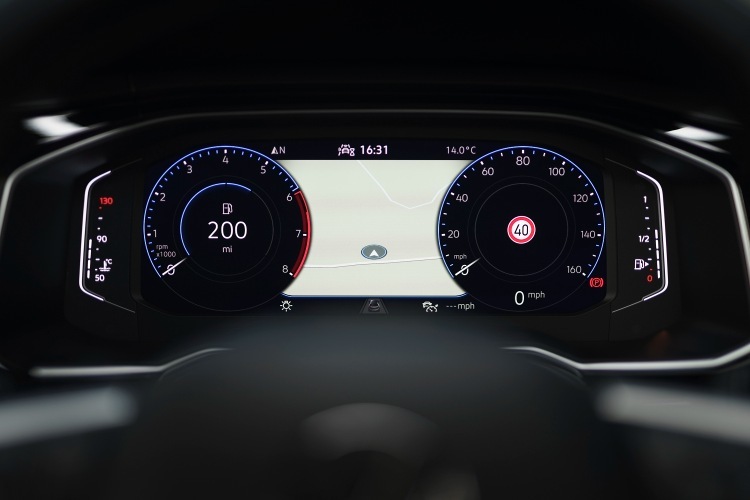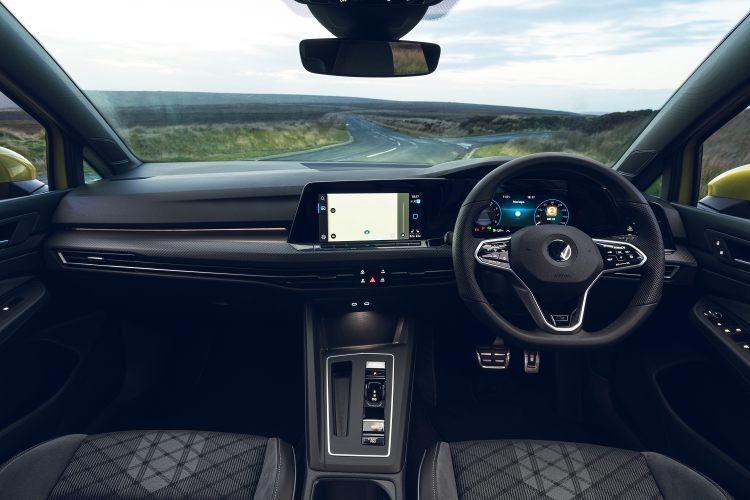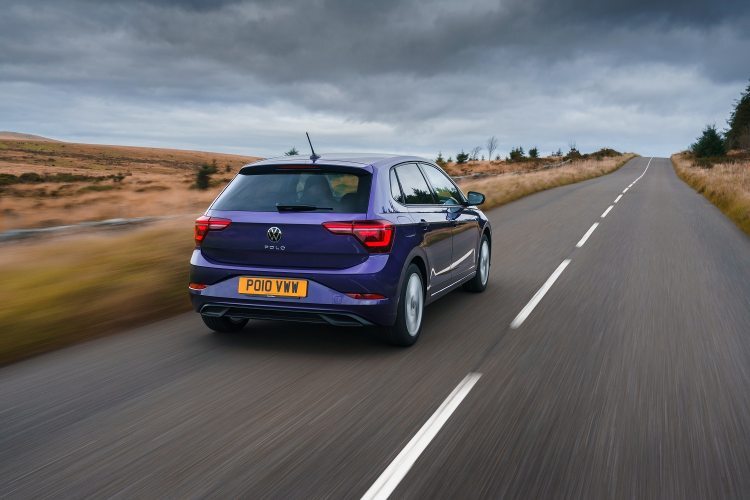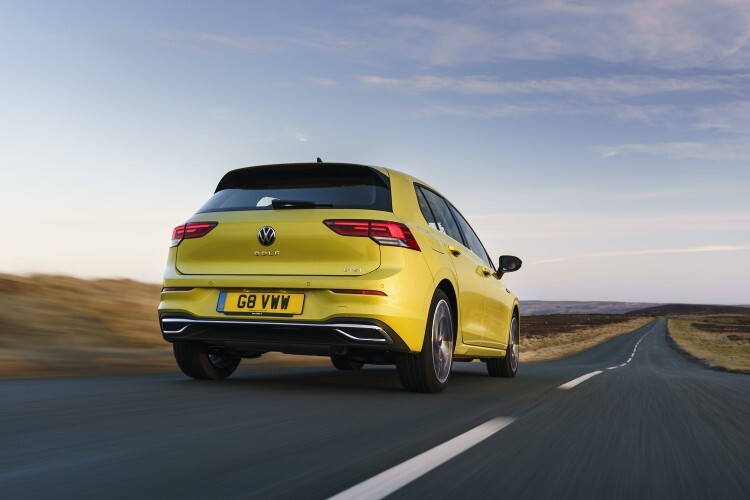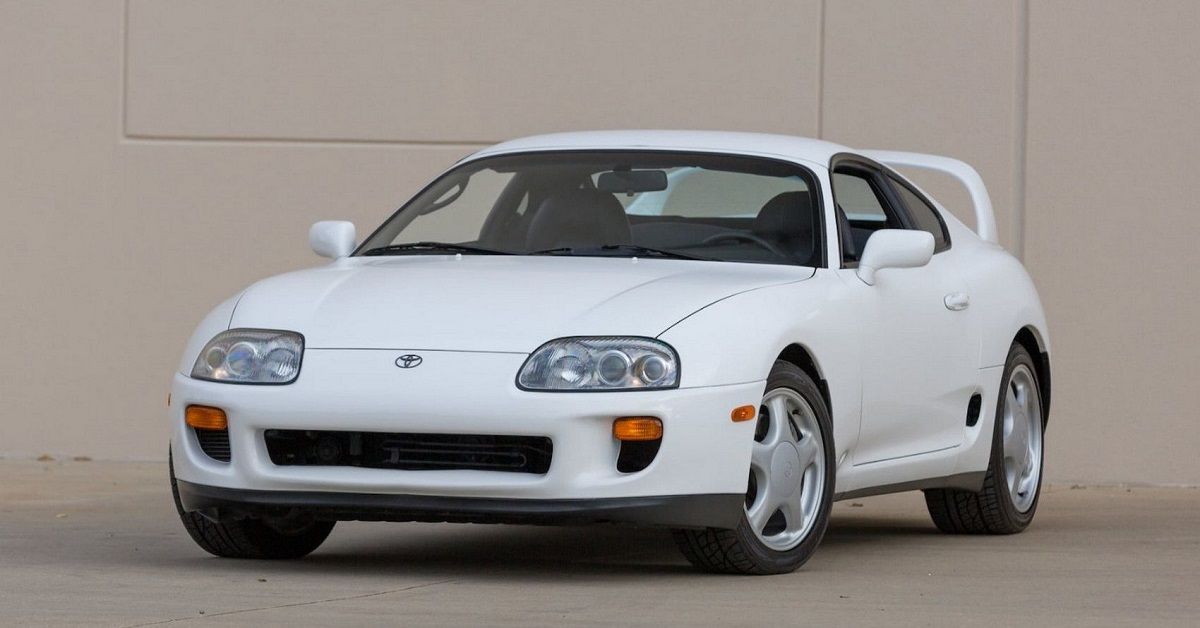Volkswagen cars are renowned for their reliability, comfort and performance with the VW Polo and VW Golf demonstrating this in style. But if you’re looking for a brand-new Volkswagen hatchback, how do you choose between the two? Our car expert Matt Robinson breaks down the differences between the two helping you decide whether the Polo or the Golf is your ideal next car.
History And Background
The Golf debuted first, in 1974, and we’re now onto our 8th generation of this sector-defining hatchback. The Polo, meanwhile, arrived just 1 year later in 1975, but strangely we’re only on the Mk6 model at the moment – because the Mk2 of 1981 managed to last for 13 years, mainly thanks to a heavy-duty facelift in 1990 which prolonged its existence. Either way, the Polo and the Golf have been honed and crafted carefully by Volkswagen over the course of almost 50 years of production each.
Which Body Types Are The Golf and Polo Available In?
Over the years, the Polo has been available as a saloon (known as the ‘Derby’), a 3-door hatch, a small estate and even a coupe, but right now it comes solely in 5-door hatchback format – and that’s true even when it is specified as its high-performance GTI model. The Golf is slightly more varied, with the 5-door hatch and a roomy estate available.
Are Size And Storage Comparable?
Spec | Golf 8 | Polo |
Boot Space | 381 litres | 351 litres |
Boot length, with rear seats upright | 800 mm | 706 mm |
Boot length, with rear seats folded | 1493 mm | 1380 mm |
Dimensions | Length: 4284 mm Width: 1789 mm Height: 1491 mm | Length: 4074 mm Width:1,751 mm Height:1,451 mm |
WhatAre The Engine Choices?
Both offer a smooth array of engines, in the main (but not exclusively) turbocharged. They are predominantly also front-wheel drive, although there are some all-wheel-drive versions of the Golf (such as the Alltrack and the R). Gearboxes amount to manual 5- and 6-speed units, or a 7-speed DSG twin-clutch unit on certain models, with any plug-in hybrid (PHEV) versions using an old 6-speed DSG.
As with many of the facets of these two cars, the Polo has far fewer engine choices than the Golf.
Polo Engine Range: The main range is made up entirely of 3-cylinder petrol engines, all with a 1.0-litre swept capacity. The base model, with 80hp, is non-turbocharged, but both the next two derivatives – badged the 95 TSI and 110 TSI according to their horsepower figures – do have turbos. The 80hp car has a 5-speed manual gearbox only, while the 110 TSI is exclusively fitted with a 7-speed DSG, and it’s only the 95hp mid-range version where you get the manual as standard and the option of having the DSG at extra cost. Standing alone is the Polo GTI, which uses a 2.0-litre, 4-cylinder turbo petrol engine developing 207hp. It is only available with the 7-speed DSG alone.
Golf Engine Range: The Golf uses the same 110hp 1.0-litre 3-cylinder turbocharged engine as the Polo for just its entry point, but every other engine in the range is a 4-cylinder unit of some sort. There’s also a subtle badging difference between ‘TSI’ and ‘eTSI’ here – the former is a pure petrol, while the latter is a mild-hybrid version. As a result, all the TSI engines have 6-speed manual transmissions and the eTSI powertrains all have the 7-speed DSG. Power on the petrol side of things ranges from 110hp through 130hp and up to 150hp, the latter two outputs coming from a 1.5-litre engine.
There’s then a 2.0-litre TDI turbodiesel 4-cylinder, which makes either 115-, 150- or 200hp, the last of these reserved exclusively for the performance GTD model (see below). The 115hp engine comes with a choice of 6-speed manual or 7-speed DSG transmissions, but the 150- and 200hp derivatives are paired with the DSG only.
Engine Type | Golf | Polo |
Petrol | 1.0-litre TSI 110hp, 0-62mph: 10.2 seconds 1.0-litre eTSI 110hp, 0-62mph: 10.2 second 1.5-litre 130hp 0-62mph: 9.2 seconds 1.5-lite 150hp 0-62mph: 8.5 seconds 2.0-litre 245hp (GTI) 0-62mph: 6.2 seconds 2.0-litre 320hp (Golf R) 0-62mph: 4.7 seconds | 1.0-litre 80hp 0-62mph: 15.5 seconds 1.0-litre 95hp 0-62mph: 10.8 seconds 1.0-litre turbocharged 110hp 0-62mph: 10.4 seconds 2.0-litre 207hp (GTI) 0-62mph: 6.5 seconds |
Diesel | 2.0-litre 115hp 0-62mph: 10.2 seconds 2.0-litre 150hp 0-62mph: 8.4 seconds 2.0-litre diesel 200hp (GTD) 0-62mph: 7.1 seconds | |
1.4-litre eHybrid 204hp 0-62mph: 7.4 seconds, electric range 43 miles (official) 1.4-litre 245hp (GTE) 0-62mph: 6.7 seconds, electric range 38 miles (official) Are There Any High-Performance Models Of The Golf Or Polo?Yes, both of them have ‘fast’ versions – but, again, when it comes to the Golf, you get many more options. The Polo’s sole ‘hot’ derivative is the GTI. The Golf, meanwhile, has a much longer heritage of GTI-dom – there has been a performance version of every 1 of the 8 generations of Golf so far – and it also has a greater variety of speedy models in its past, such as the Rallye, the VR6 and the R32; some of these employing V6 engines, instead of the usual 4-cylinder fare of VW’s hot cars. In the current range, there are no fewer than 5 performance models… including two GTIs! That’s right, there’s a regular 245hp model and then a more hardcore, focused GTI Club sport with 300hp. Some say the Club sport is the best-driving Golf of them all, being as it is front-wheel drive and limited-slip-diff-equipped, but it is not the flagship nor fastest version. That honour belongs to the Golf R, which has the benefit of 4-wheel drive and 320hp, enough for 0-62mph in 4.7 seconds and a limited top speed of 168mph with the right options packages. For those looking for more ecologically minded performance, either the GTE or GTD are worth considering. The GTE is a PHEV petrol-electric with the same 245hp as the GTI, only it can go up to 37 miles on electric power alone and its CO2 emissions are as low as 27g/km. The GTD is a torquey turbodiesel with 200hp and strong performance, but it’ll do 54.3mpg if you drive it sensibly. Bear in mind, though, that all 5 powertrains are only available in the hatchback body of the Golf – if you want a Golf Estate, you are restricted to the Golf R Estate as your sole performance option. There used to be the choice of having the GTD as a wagon too, but for the Mk8 even that has been stripped away – and the GTE, GTI and GTI Club sport have never been offered as estates by Volkswagen. Can I Get An Electric Or Hybrid Version Of Either?In a word, for the Polo… no. There aren’t any hybrid models and there isn’t a full electric variant either. Tsk, VW. For the Golf, there’s a little more choice, but while there used to be an e-Golf EV in the Mk7 generation, the advent of the all-new and all-electric ID.3 hatchback means a fully electric Golf is no longer a ‘thing’. So the best you get is an eHybrid or GTE, both of which are PHEVs. Polo Vs Golf Interiors And KitLife is the entry-level grade for both cars but, on the Golf, you get more kit for your money than you do on the Polo. That said, a Polo Life comes with 15-inch alloy wheels, LED lights all round on the outside, a leather multifunction steering wheel, the 8-inch Digital Cockpit instrument cluster, wireless App-Connect for smartphones, electric windows all round, electrically adjustable, folding and heated door mirrors, manual air conditioning, automatic headlights and wipers, and even cruise control with a speed limiter. There’s a good spread of advanced driver assist systems (ADAS) as well, although the infotainment is only ‘nav-prepped’, rather than ‘nav-equipped’. To that end, a Golf Life is a little more generous. It has the same LED exterior illumination, auto lights and wipers, and electric door mirrors as the Polo, but it gains bigger 16-inch alloys, nav-equipped Discover Media infotainment, a larger 10.25-inch Digital Cockpit Pro cluster, Keyless Go, 10-colour interior ambient lighting, full climate control, uprated Adaptive Cruise Control with a speed limiter, and front and rear parking sensors too. It also has enhanced ADAS compared to a Polo Life. Check out our Golf trim guide for a more detailed look. Which Drives Better, The Polo Or The Golf?Realistically, both cars offer much the same solid, safe driving manners. This isn’t surprising, as the Polo has long been modelled on the Golf’s behavioural traits, so what you get with both of them is some of the most grown-up dynamic experiences in each class – as in, the Polo is more refined and assured than the Ford Fiesta, Vauxhall Corsa, Peugeot 208 et al, while it’s much the same story for the Golf in the sector above, where it competes with the Toyota Corolla, Skoda Octavia, Renault Megane, Honda Civic and more. What you’ll benefit from in either Volkswagen is a smooth, comfortable ride, excellent sound suppression in the passenger compartment, and a general feeling of stolid quality from both. The Polo and the Golf have good grip and nicely calibrated steering, but they don’t serve up much joy if you throw them through the corners with a bit of gusto. That’s less true of the performance models but, again, it’s the Golf which has the edge here. The Polo GTI has never truly blossomed into a great hot hatch. The Golf is better, with the GTI, GTI Club sport and the R as the choice of the keenest enthusiasts. For sheer bragging rights, the AWD R wins hands down – it’s much quicker for 0-62mph than either version of the GTI and it has all the traction advantages of drive being sent to all 4 wheels. We’ll happily accept the Mk8 R is the best ultra-Golf we’ve seen so far (that means any other generation of R or R32)… we’d be putting our money into the Club sport. Once it is up and running, the fact it is only 20hp and 20Nm down on the R, and considerably lighter too, means the GTI Club sport feels every bit as fast and gratifying as its supposedly bigger brother. And with just two driven wheels, it requires more effort from its driver, which in turn leads to more reward when you get it right. Which Is Better, The VW Polo Or The Golf?For this head-to-head, the Golf. The Polo has always been in the shadow of the Golf, even if it only landed in showrooms a mere year after the Golf Mk1 debuted. Overall the Golf offers that bit more choice, equipment and ownership feel good factor throughout its range than the Polo does. If we could afford it, we’d be going for Golf. If we wanted an electric Volkswagen hatchback, and we were worried that neither of these two could truly fulfil that ecological brief? Then we’d be looking at the ID.3. Volkswagen Golf = 8/10Volkswagen Polo = 7/10For more articles, you can check out our car features and guides section. Or if you're looking for a brand new vehicle, we've got a huge range of cars to lease at unbeatable prices. |



